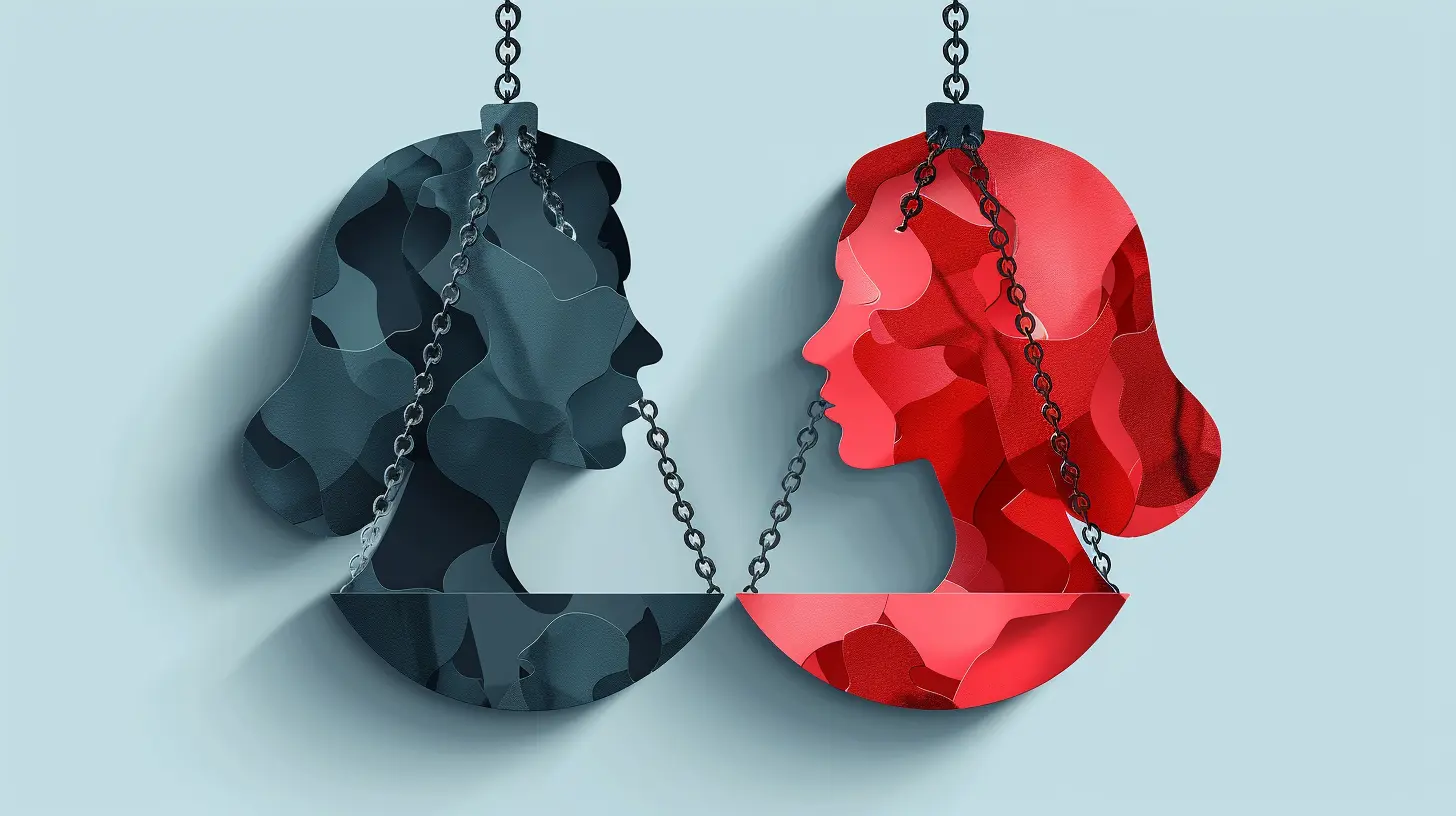How Psychological Safety Fosters a Culture of Accountability
18 October 2025
Ever noticed how some teams just click? Like, everyone’s open, things flow, and people take ownership? That’s not just luck—it’s psychological safety in action. It’s the secret sauce behind high-performing teams and, quite frankly, behind people actually owning up to their work—good or bad.
Let’s have a heart-to-heart on how psychological safety can be the key ingredient in creating and fueling a culture of accountability. Spoiler alert: it’s not about coddling people. It’s about giving them a safe space to be real and responsible.
What Exactly Is Psychological Safety?
Okay, first things first—what’s psychological safety? Super simple: it’s the feeling that you can speak up, take risks, admit mistakes, and ask questions without the fear of being laughed at, punished, or shamed.It’s like a safety net. You know if you trip, you won’t crash and burn—you’ll bounce back. In a workplace, that means people feel seen, heard, valued, and respected.
Amy Edmondson, a Harvard professor, made this concept famous. She found that the best teams weren’t the ones that made the fewest mistakes—but the ones who were brave enough to actually talk about them.
So if we’re being real, psychological safety is less about avoiding mistakes and more about surfacing and learning from them. Sound like something you’d want in your culture? Yep, thought so.
Accountability: More Than Just Owning Mistakes
Now let’s switch gears for a sec. Accountability. It gets a bit of a bad rap, doesn’t it? Like, “Ugh, I’m being held accountable” sounds like someone’s in trouble. But accountability isn’t about blame—it’s about ownership.True accountability is when people:
- Do what they say they’ll do.
- Own their responsibilities.
- Acknowledge when things go south.
- Step up, not point fingers.
It’s about integrity and trust. But here’s the catch—you can’t force accountability. You can’t guilt or threaten people into owning their stuff long-term. That’s where psychological safety comes in.
The Link Between Psychological Safety and Accountability
So how do these two play together?Think of psychological safety as the soil, and accountability as the plant. Without the right soil, the plant doesn’t grow. Psychological safety creates the environment where accountability can thrive.
Here’s the thing—people aren’t going to take responsibility if they’re terrified. If your team fears being chewed out for mistakes or being shamed for questions, they’ll start playing it safe. They’ll hide errors, avoid tough conversations, and cover their butts instead of stepping up.
But when people feel safe?
- They take ownership.
- They admit when they mess up.
- They give and receive feedback openly.
- They step outside their comfort zones.
That’s real accountability. Rooted in trust, not fear.
Why Psychological Safety Encourages Responsibility
Let’s break it down further. What is it about psychological safety that makes people more accountable?1. People Aren’t Scared to Speak Up
Imagine this: You notice a process error that could cost the company thousands, but you’re afraid your manager will snap or blame you for pointing it out. So you stay quiet.Now flip the script. In a psychologically safe environment, you’d speak up—because your feedback is welcomed, not punished.
When people feel safe, they raise red flags early. They take responsibility not just for themselves, but for the success of the whole team.
2. Mistakes Become Learning Moments
We all screw up. You. Me. Everyone.But when people feel safe, they don’t hide their mistakes. They share them. Why? Because they know it’s better to learn and grow than to pretend nothing happened.
Instead of “Who messed up?” the question becomes “What can we learn?” That’s next-level accountability.
3. Feedback Flows Freely
Feedback’s tricky. Nobody loves getting it, and giving it can feel awkward. But in teams where psychological safety is strong, feedback isn’t personal—it’s purposeful.People give and seek feedback because they care. Because they want to get better. And that creates a feedback loop (pun totally intended) that fuels growth and responsibility.
4. People Feel Ownership Over Their Work
When you trust others and feel trusted in return, you’re more invested. You care about your deliverables. You want to meet deadlines. You want to contribute.That’s accountability with heart, not fear.
Common Workplace Myths That Sabotage Psychological Safety
You’d think creating a safe environment would be common sense, right? Unfortunately, a lot of organizations still fall into old, outdated patterns that backfire.Let’s bust a few myths:
Myth 1: “Tough love creates high performers.”
Truth bomb: Fear is not a motivator—it’s a muzzle. Sure, people might follow orders, but they won't innovate or take initiative. Nobody thrives when they’re walking on eggshells.Myth 2: “Accountability means cracking down.”
Nope. Accountability isn’t about micromanaging. It’s about trusting people and supporting them so they want to do their best.Myth 3: “Psychological safety makes people soft.”
Hard no. Being open, vulnerable, and honest is actually incredibly courageous. It takes guts to admit mistakes or speak truths. Safe teams are strong teams.Real-Life Signs You’ve Got Psychological Safety
Not sure if your team has psychological safety? Here are a few quick questions to consider:- Do people admit when they’re struggling?
- Are tough conversations happening without drama?
- Can someone challenge the status quo without backlash?
- Are people taking initiative without being pushed?
- Is feedback seen as a gift, not a threat?
If you're nodding your head, you're on the right track. If not, no worries—it's never too late to build it.
So, How Do You Build Psychological Safety?
Glad you asked. It doesn’t happen overnight, but every small step counts.1. Lead With Vulnerability
Leaders set the tone. If you’re a manager (or even just super influential), start by showing your own imperfections. Share mistakes. Say “I don’t know.” Ask for feedback.It tells others, “Hey, it’s safe to be human here.”
2. Make Curiosity the Norm
Get people asking more questions—not just answering them. Curiosity leads to innovation, collaboration, and better communication.Pro tip: Replace “Why did you do that?” with “What was your thinking behind that?” See the difference?
3. React Positively to Concerns
If someone raises a red flag and they get shot down? That door slams shut.But if they’re thanked, even if the concern turns out to be minor? Boom—trust increases.
4. Normalize Failure
Failure sucks, but it’s part of growth. Celebrate lessons learned from mistakes. Even better? Share stories of your own face-plants.The message? “Falling down doesn’t mean you don’t belong. It means you’re trying.”
5. Encourage Peer-to-Peer Support
Accountability doesn’t always need to come from the top. Encourage teammates to support each other. Create a buddy system. Hold reflection sessions. That horizontal support is just as powerful.The Ripple Effect: What Happens When Psychological Safety Meets Accountability
When your workplace culture embraces both psychological safety and accountability, magic happens. Here’s what it looks like:- Higher engagement – People want to show up and contribute.
- Better performance – Mistakes are caught early, and learning is continuous.
- Stronger relationships – Trust becomes the foundation, not the exception.
- Increased innovation – People feel safe to pitch wild ideas without fear of judgment.
- Faster growth – Feedback loops tighten, and people develop faster.
In short? Safe people take bigger, smarter risks—and they own the outcomes.
Final Thoughts: Safety First, Accountability Follows
If you want accountability, don’t start with performance reviews or spreadsheets. Start with conversations. Start with empathy. Start with psychological safety.Because when people feel safe, they show up fully. And when they show up fully, they own their stuff. That’s not weakness—that’s leadership.
And remember, cultures don’t change overnight. But every time you choose curiosity over criticism, grace over guilt, and realness over perfection, you’re building something powerful.
You’re building a team that not only performs—but thrives.
all images in this post were generated using AI tools
Category:
Psychological SafetyAuthor:

Nina Reilly
Discussion
rate this article
1 comments
Bryce Kirkpatrick
Crucial link between safety and accountability enhances team performance.
October 30, 2025 at 5:00 AM

Nina Reilly
Thank you! You're absolutely right—establishing a strong connection between safety and accountability is essential for enhancing team performance and fostering a positive work environment.


